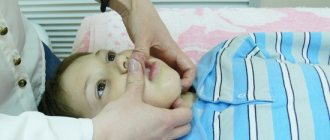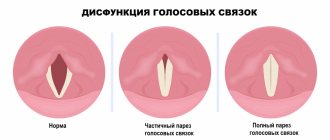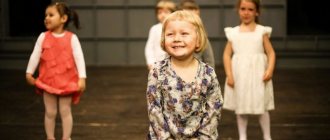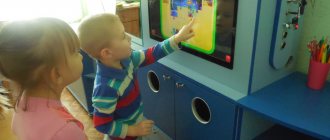Technical aspects
Currently, responsibility for the formation of speech therapy conclusions is assigned to specialized points. To be enrolled, you must pass a special PMPK commission, as well as receive a referral in the prescribed form. One point simultaneously serves several dozen people. The work team is selected by government agencies. Children of preschool age with speech disorders are taken on as tutors. Responsibility for making decisions on received applications rests with local commissions. They may refuse if all available places are already taken. First of all, persons with ONR from the first to third levels are enrolled, as well as in the presence of FFNR. The speech therapist conducts an initial examination. Typically, such a procedure is prescribed for the fall, and then a journal is started on the child to monitor the dynamics of the condition. Based on the results of the examination, information is sent to a council of doctors and teachers to determine the optimal method of working with the child. If there are speech disorders, a referral is made for a comprehensive analysis of the condition to the PMPK.
In order for a child to receive specialist help to correct his ability to speak, representatives of the minor must bring the commission’s conclusion to the local department responsible for education issues. If officials make a positive decision, they formalize a referral by which the child is enrolled in a speech center. During the school year, the child may be expelled if violations are ruled out. If the issue of expulsion becomes controversial, it is necessary to refer the student to a commission that will make a verdict on the case.
Features of work
The speech therapist is responsible for determining the effectiveness of the chosen option for working with each child. He needs to have his speech development assessed. As a rule, the analysis is carried out at the end of spring, at which time children who received the help of speech therapists are re-diagnosed. To monitor progress, speech therapists keep individual cards for each person admitted. The teacher’s task is to organize classes that allow children to develop, taking into account the nuances of their defects. The duration of the lesson must correspond to the characteristics of children's physiology, as well as hygienic and sanitary standards adopted in our country. Subgroup work is allowed with those whose impairments are similar. With OHP, a subgroup is formed of no more than 4 people; with FFNR, it is allowed to unite up to six people. The duration of an individual lesson should not exceed a quarter of an hour. With OPD, it is necessary to work with children three times a week or more often, with FFND - twice a week or more often, and with phonetic defects - at least once a week. To record attendance, speech therapy centers are required to keep logs.
When working with children, a speech therapist should spend 70% of his time working with subgroups or individually, allocate about 20% of his time to methodological interaction and group consultation, and spend only one tenth of his working day on documenting the process. To record the success of the work, you need to keep an attendance notebook, a journal reflecting the dynamics for each student, speech cards and plans showing the prospects for each student.
Relevance of templates
You can find many examples of speech therapy reports. The current material allows you to get acquainted with what such documents should look like. At the same time, you need to understand: in each individual case, the conclusion must be drawn up individually. It plays a role what the distinctive features of the subject are. No matter how simple, laconic, and attractive in design the samples of speech therapy reports for a child may be, when applying the template to reality, one must be guided by the specifics of the case.
Rhinolalia
The speech therapy report may mention such a deviation. The term refers to a situation where a child’s voice timbre and ability to pronounce sounds correctly are impaired. The pathology is caused by incorrect activity of the nasal cavity when speaking. If the case is particularly severe, the violations cover up to 38 sounds.
Motor alalia is possible. If this is observed, it must also be recorded in the speech therapy report. This format is one of the most persistent variants of speech underdevelopment. It is observed if the parts of the cerebral cortex responsible for speech function are damaged. Children with this disorder begin to speak later, their vocabulary increases very slowly, and in communication, minors prefer to resort to facial expressions and gestures.
Introduction
Among congenital malformations, one of the first places is occupied by clefts of the upper lip, hard and soft palate.
The frequency of this pathology is 1 case in 600-700 births. The main speech defect in such children is open organic rhinolalia. This textbook examines the causes and pathogenetic mechanisms of rhinolalia, provides an analysis of the structure of the defect, primary and secondary developmental abnormalities in children with this pathology, and offers a description of the program for diagnosing and correcting disorders of sound pronunciation and voice timbre in this disorder.
The educational materials are intended for students of the defectology faculty of the specialty “Speech Therapy” and are aimed at further improving the training of speech therapists - their professional practical skills in correcting the primary defect and secondary developmental deviations in children with rhinolalia.
The purpose of this manual:
familiarizing students with the basic concepts and patterns of general, speech and mental development of children with maxillofacial pathology, with the anatomical and physiological mechanisms of speech in rhinolalia, with methods of diagnosis and correction of voice and speech in this disorder.
The main objectives of this discipline:
—
familiarizing students with the etiology and pathogenesis of rhinolalia;
— familiarization with the techniques and methods of medical, psychological and pedagogical diagnosis of the condition of children with congenital cleft lip and palate;
— formation of theoretical and practical ideas about an integrated approach to eliminating this speech pathology;
— familiarization of students with methods of corrective treatment for rhinolalia.
Students who have studied the discipline "Rhinolalia" should know:
— etiopathogenetic mechanisms of rhinolalia;
— clinical and psychological-pedagogical characteristics of children with rhinolalia;
— basic methods of corrective action for rhinolalia.
Students should be able to:
—
conduct examinations of children with rhinolalia;
— determine primary and secondary disorders in the structure of a speech defect;
— to select correctional techniques, plan and carry out correctional psychological and pedagogical work in the pre- and postoperative periods with children with congenital cleft lip and palate.
Students must have the skills:
— drawing up an examination protocol, analysis of examination materials, selection of speech and didactic material for speech therapy classes.
Basic formulations
Options for speech therapy conclusions for people in the early age group include the following formulations:
- Dysarthria.
- Speech development delay.
- Developmental delay and dysarthria.
May establish delayed development of speech skills and cognitive abilities. There is a possibility of delayed psycho-speech development. For some, speech development is slowed down due to a spastic-paretic symptomatic complex involving muscle tissue. In this condition, the operation of the apparatus responsible for articulation is corrected, and its motor skills are disrupted.
Dysarthria in young people is diagnosed when expressive speech skills involve the use of individual words and simplified phrases. Before this period, only speech-motor muscle disturbances can be identified - the age of the subject does not play a role. These affect both muscle tissue and the speech apparatus. When identifying this condition, the conclusion must indicate the presence of symptoms of spastic paresis. An alternative way to formulate the diagnosis is a spastic-paretic symptom.
Second level
A specific feature is the appearance of phrases formed by two, three, and occasionally four words. At first, they seem unclear from the outside, but when analyzing speech samples, one can notice the use of amorphous words and those that have generic, case, and other categorical features. The child connects words and their combinations, tries to construct a phrase, correctly and incorrectly applying the rules of speech control. Sometimes you can hear how he independently uses simplified prepositions, sometimes - their variants characteristic of babbling. Being at the second level of development, the child may at times miss a preposition and work incorrectly with sentence elements, while the volume of words is significantly higher than is typical for the first level. You can see the adverbs. The minor begins to use numerals. At the same time, the morphological system is rather weak, only simple operations are available for forming words, therefore speech capabilities are assessed as poor, the child often makes mistakes, misunderstands a number of adjectives and prefixes denoting actions.
At the conclusion of the speech therapy examination, the second level is indicated, when in the presence of the described speech problems one can see the difficulties of using abstract terms, concepts used for generalization, antonyms and words with similar meanings. Children of this level tend to use words that imply an abundance of meanings. Coherent speaking is accompanied by a weak transmission of a number of relationships of meaning. For some, there is still only a sequential listing of everything observed.
First level of development
According to the samples of speech therapy conclusions, the first level is established if the means of communication by speech are extremely few in number, the active vocabulary is formed by only a few everyday letter combinations that a person pronounces unclearly. In addition, the child can use onomatopoeia and use various sets of sounds. As a rule, such children actively use facial expressions as a communication tool and often point with gestures. A standard set of means is used by a person to indicate both an action and an object. Additionally, the child uses changes in intonation and gestures, thereby trying to create a difference in the meanings of what is spoken. Such communication can be called babbling, which in some situations becomes almost one-word sentences, but may not always be assessed as such. At the first level, the child has practically no opportunity to differentiate between actions and objects; the names of the former are replaced by words denoting objects. It is possible to replace the names of objects with words denoting an action.
As can be seen from the samples of speech therapy reports, when establishing the first level of speech development, attention is paid to the polysemy of words - as a rule, this feature is characteristic of a child at this level. A small vocabulary is mainly associated with objects and events observed by the person. Morphological details are practically not used to reflect grammar. The base of speech is root words without inflections. Phrases are formed by elements of babble. A person reproduces the described situation step by step with sounds, actively using gestures to explain what he wants. Every word used in such communication is related to the context in numerous ways, so it is impossible for an outside observer who is not inside the situation to understand what is being said.
Fourth level
In the speech therapy report, the ONR of the fourth level is indicated if minor disruptions in the speech components of the language system used by the child are observed. The sounds are not clearly differentiated; specific syllabic disturbances are possible that affect the structure. The child cannot retain a phonemic image in memory, although he understands the meaning of the word. As a result, the volume of sounds changes, and various options are possible. The speech is not intelligible enough, and the clarity of diction leaves much to be desired. The overall impression is described as blurry.
In the speech therapy report for a child at the fourth level of development, they mention the persistence of erroneous use of various suffixes designed to reflect emotional content, the number of objects, as well as a number of similar ones. It is quite difficult for a child to form new complex words. Difficulties are observed when it is necessary to plan a phrase and select the optimal language tools for this. Although coherent speech is observed, it is quite peculiar. With general speech underdevelopment, specific sensory, motor skills, higher mental functionality and activity are observed.







